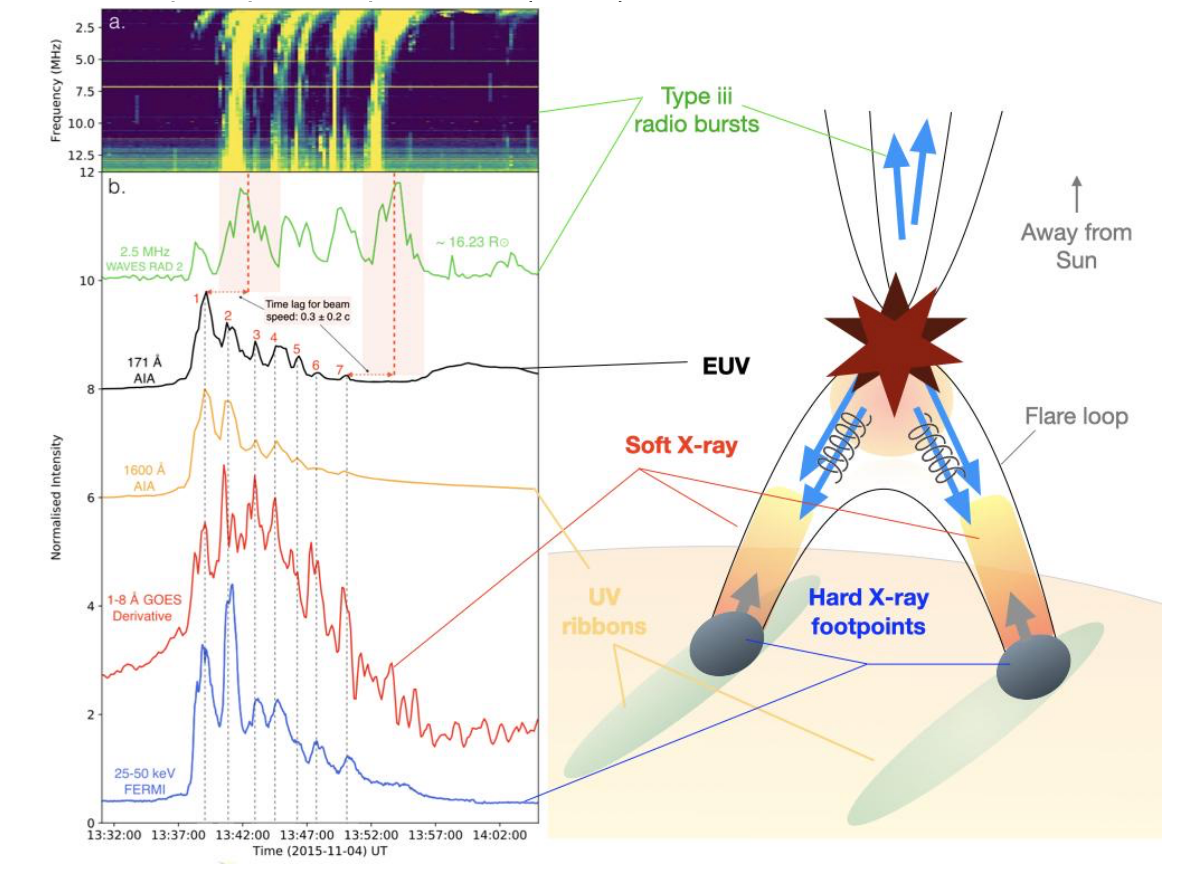
Quasi-periodic pulsations in solar flares: a key diagnostic of energy release on the Sun
Whitepaper #181 in the Decadal Survey for Solar and Space Physics (Heliophysics) 2024-2033
First Author: Andrew Inglis
Solar flares are among the most powerful and disruptive events in our solar system, however the physical mechanism(s) driving and transporting this energetic release are not yet fully understood. An important signature associated with flare energy release is highly variable emission on timescales of sub-seconds to minutes which can often exhibit oscillatory behaviour, features collectively known as quasi-periodic pulsations (QPPs). To fully identify the driving mechanism of QPPs, exploit their potential as a diagnostic tool, and incorporate them into our understanding of solar and stellar flares, new observational capabilities and initiatives are required. There is a clear community need for flare-focused rapid cadence, high resolution multiwavelength imaging of the Sun, with high enough sensitivity and dynamic range to observe small fluctuations in intensity in the presence of a large overall intensity. Furthermore, multidisciplinary funding and initiatives are required to narrow the gap between numerical models and observations. QPPs are direct signatures of the physics occurring in flare magnetic reconnection and energy release sites causing periodic behaviour, and hence are critical to understand and include in a unified flare model. To date, despite significant modelling and theoretical work, no single mechanism or model can fully explain the presence of QPPs in flares. Moreover, it is also likely that QPPs fall into different categories that are produced by different mechanisms. At present we do not have sufficient information to observationally distinguish between mechanisms. The motivation to understand QPPs is strengthened by the geo-effectiveness of flares on the Earth’s ionosphere, especially if in resonance with geophysical periodicities, and from a solarstellar perspective by the fact that stellar flares exhibit similar QPP signatures. QPPs present a golden opportunity to better understand flare physics and exploit the solarstellar analogy, benefiting both astrophysics, heliophysics, and the solar-terrestrial connection.
